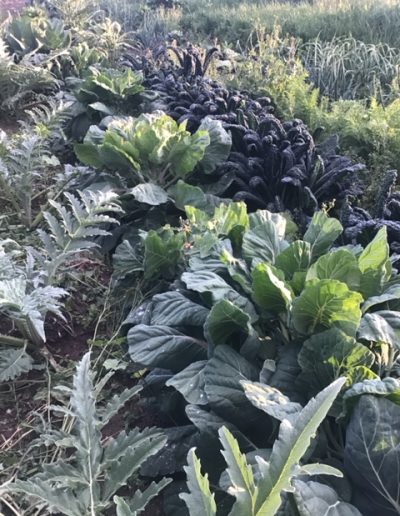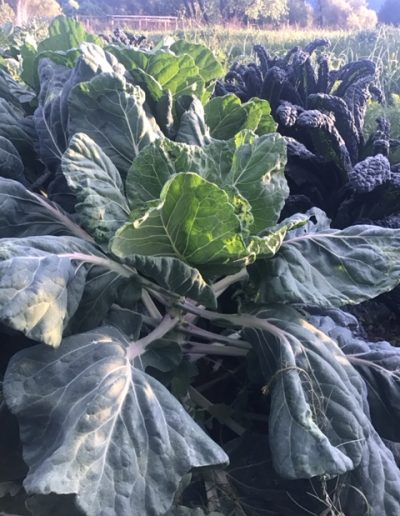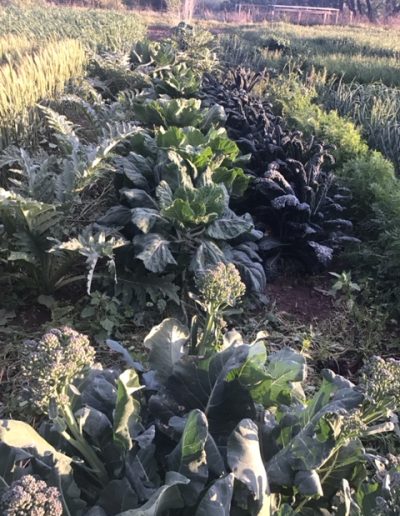by Diane Pleschner | Sep 22, 2025 | Farming
Any land worth having was someone else’s land before you. Of course a house needs less land than a farm, and you can divide land, plant houses and write off the handprint of the farmers who tended the fields. Money isn’t everything, but as the houses got closer to the family farm, the taxes for what the farm was worth had more to do with the price of housing than the value of the crops it might produce.
Taxes went up until Grandpa had to move on and we sold. We all moved north and kept at it with cattle and alfalfa instead of oranges and lima beans. The old place had tack rooms with old harnesses hanging. There was a forge and a place to work metal, the draft stock needed shoes. A can of carbide was in the corner and we could cook up acetylene, although I was too young to start cutting metal with more than a saw. But we sharped nails with the grinding wheel and made spears.
Moving north meant the old horse drawn equipment, the steam equipment and that which was too big to truck went to scrap or over the edge into the barranca. The new equipment yard in Oregon was modern for the times, but bigger just kept getting bigger, and by the time Oregon came apart the auction was a bloodbath . We put too much faith in those machines and they really broke hearts, and still it goes on — one farm sale to the next.
Maybe it’s not right that I should hold the machines responsible, but I do, and as the hedgerows came down, the fences, the property lines to the neighbors expansion and behemoths rolled across the good land, they killed off both the farmers and the towns nearby. They killed off the insects, the birds and after enough years, even the springs that once flowed.
Anyway I always wondered how it would be if we hadn’t mechanized, if we stepped back in horsepower towards minimalism rather than the grandiose. A hoe, maybe a couple of battery electric tools that could be replaced with something smaller and cheaper, in a pinch. But here it is, the end of expansion. Here we are and bigger is about to lose.
My time is arriving, although the auction was the end a long time ago. The old farm went down and I picked up a grub hoe. Grandpa had good advice I have tried to live by. He drove horses, fixed stationary combines, got big and got crushed. He said, “Buy water, not land. “ He said I shouldn’t expect to make any money farming. I took his advice, bought riparian water rights, a little land with it, and I have never been surprised that I didn’t make money farming. The houses are getting closer, everything else seems like it’s further away.
by Diane Pleschner | Aug 20, 2025 | Bruce's Substack, Farming
I guess I’m trying to prove something proven millions of times thousands of years ago.
There will be villages bringing in grain again someday, but for now it’s just one old man on his hands and knees and not so romantic. I harvest with a nice sharp pair of kitchen shears. Handful by handful, I carefully place the wheat into a big cardboard box all lined up and neat so I can, one handful at a time, pull it out again to thresh. If it’s nice and neat it works better. My threshing floor is a big tarp set out in a field where it can catch lots of wind. It doesn’t rain here, so at least I have time to make it a daily half hour of work threshing and winnowing until I get through everything. Hand milling on 10,000 year old technology isn’t all that difficult, but it takes me an hour to get enough flour for one nice round loaf of bread. I haven’t timed the harvest and threshing times, but per pound they go faster than the hand milling. Harvest is time sensitive, whereas the milling can wait months, so milling can be something to while away winter hours.
I choose techniques that require zero steel. Yes, my grubbing hoe is steel, and my hand shears too, but they can both be converted back to stone, as they were in the Neolithic.
I have come to believe the quern stone was the invention that enabled civilization.
My project is to grow grain crops by hand with a hoe, but my project also involves milling the grain on a rhyolite metate that I pecked into a working form. I can mill about two cups of fine flour and another two cups of bran and semolina in an hour. The last part of the project has been capturing a sour dough starter and baking various sour dough loaves. Rye, rosemary acorn and spelt are some of the grains I have grown and used in the small loaves that I bake.
I know this has all been done before, and they tell us from such humble beginnings we built cities. Growing, threshing and winnowing fifty pounds of wheat isn’t difficult . There are plenty of crops far more fickle than wheat. My 50lb. red durum crop came off eight rows together in a thousand sq. ft. of garden space. Red durum is very productive and far easier than spelt to process into clean grain.
Milling time is a bit of a constant, like how much time it takes to hoe a given area of garden. Other chores, like dehulling grain, can be fairly quick or frustratingly slow depending on the grain you use. There is no secret technique, the hand tools are timeless: the quern, the mano, the wind.
I can tell you it’s easy, there are thousands of cultures to prove that a peasant with some seed and a quern stone can feed a family – lot of time or timeless tradition.
But we have largely forgotten making stone tools, or winnowing grain. Pecking Querns has probably always been a bit of a specialty, and farthest from a skill your digital assistant will ever help you with. Grind stones require a venture into our past, and finding your first effective quartzite hammer-stone and whacking it against another rock is a real walk into our past. Our hands remember quickly. The stone you want comes round, and another season of grains too, and the years slip away, until your work is part of what always was, like your tools and your time here on the land.
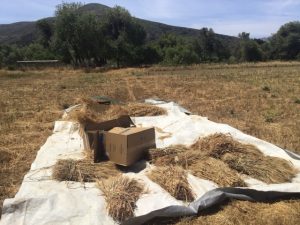
Wheat bundles in field
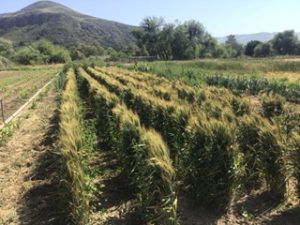
Red durum wheat in field
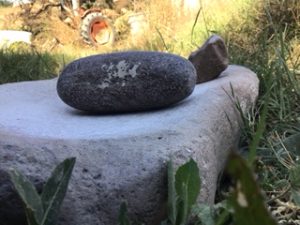
Quern stone & mano
by Diane Pleschner | Jul 25, 2025 | Bruce's Substack
Bruce documents his knowledge and accomplishments in subsistence farming on Substack. His Substack URL is Bruce Steele – Substack substack.com This is his latest post about stone milling tools.
***
Stone milling tools were on Aunt Shirley’s porch in Moorpark . They were mostly stone bowls and pestles used for preparing acorns. They came from the bean fields when a plow would turn them up. Aunt Shirley put dirt and succulents in them, one bowl on each step.
The bowls and the rocks they came from have come to into my life, one bowl or metate (quern stone) at a time. I started pecking bowls with a steel hammer and chisel, but smoothing them has always been done with a mano, and usually that same mano would eventually marry with the bowl, the surfaces worked together for a perfect fit.
For me pecking a metate without steel tools has been long dead lessons relearned. Saddle Querns were produced by every civilization prior to steel tools. The Quern made civilization possible. Wheat really wouldn’t have done us much good without a Quern. But when steel chisels came along so too did the Querns, and steel chisels enabled bee hive style round milling stones to be created and they replaced the old saddle shaped ones that served us for at least 8,000 years before steel and rotating mill stones.
I use three stones: The big relatively long and flat stone that will be shaped into the saddle, a river rock that is shaped like a rolling pin, and a quartzite hammer stone. The mano (rolling pin) needs to be of a harder stone than the saddle, and you can start to hit the saddle with it to remove bit by bit a crumble of grit. As the mano repeatedly hits the quern it smooths the end of the mano, and as the quern takes shape so does the mano. The quartzite hammer stone is smaller than the mano and it is used to peck surfaces after the larger mano has roughed it into shape. Also as you put more and more work into your quern, more delicacy is required to avoid breaking it. So a lot of the final shaping is with the quartzite hammer stone.
An interest in milling tools led to an interest in milling acorns and crops we humans milled in the past. Acorns kinda led to pigs, but that is a different story. Milling acorns is relatively easy because they are soft and can be milled wet. Wheat and grains are milled dry and require different tools than the bowl and pestle used for acorns.
Quern stones need to be hard because nobody wants grit in their flour. Our ancestors didn’t like grit either . Knowledge about what stones work is easy enough if you copy what stone our ancestors chose. Granite or basalt querns are common. You can look into what stones were used locally at a natural history museum near you.
So after pecking my quern and grinding some rice to clean it and rid it of grit, I tried grinding some dehulled spelt . I used a #50 sieve to sift the flour . The results are nice light colored flour with no grit.
[My interest has grown] From pecking stone bowls to preparing acorns, from hundreds of pounds of foraged acorns to pigs. From wheat to pecking a quern: Egg noodles, soba noodles, breads, cream of wheat from the bran, desserts.
It is easy enough to rake up 500 pounds of acorns and dry them for storage. With nothing more than a grubbing hoe and a hand sickle, one man can grow, harvest and process 50 pounds of wheat, another fifty pounds of spelt and several hundred pounds of corn on about a half acre and still have room for plenty of fresh vegetables.
A hoe and some stone milling tools are the basic tools that enabled our distant relatives access to enough food to support a village. Those same tools, without mechanization or steel, still can provide.
Once upon a time, the lords took the quern stones from the peasants. They were taking their freedom to farm untaxed. If all the grain had to go to the manor’s mill to get flour for bread, everything could be tallied and taxed. There is some freedom still in gardening and milling without anything but human power.
A stone hoe is still a future project but I suspect it would work as well as the steel grub hoe I currently use.
Red Durum Wheat, 50 pounds finished grain from a 1,000 sq.ft. garden space and a grub hoe. Threshed and winnowed by hand. Mostly milled with an electric mill but walking back is optional, right?
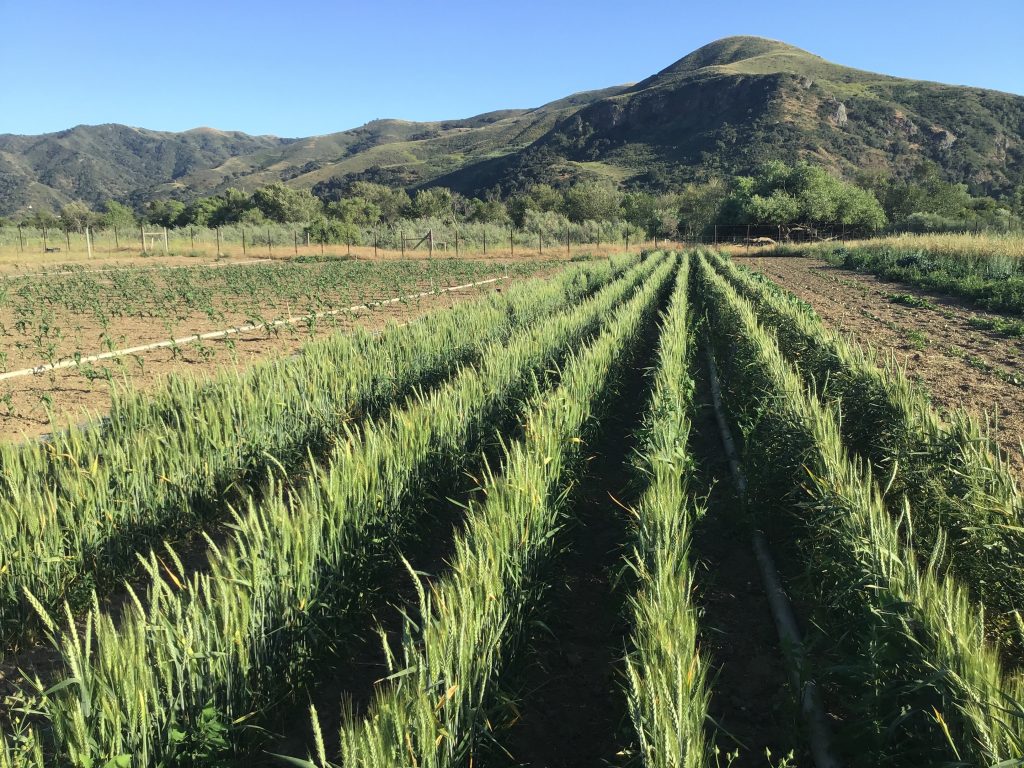
Wheat field at Winfield Farm
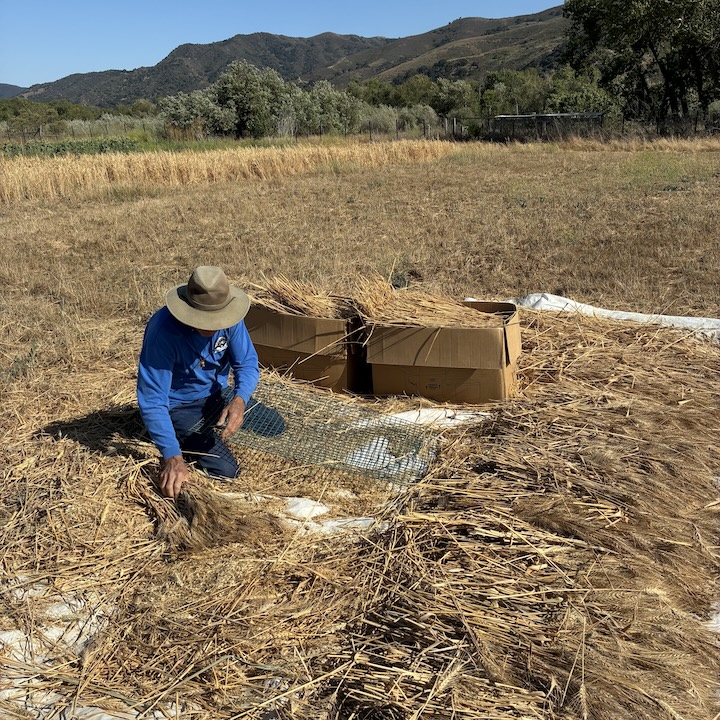
Threshing wheat by hand
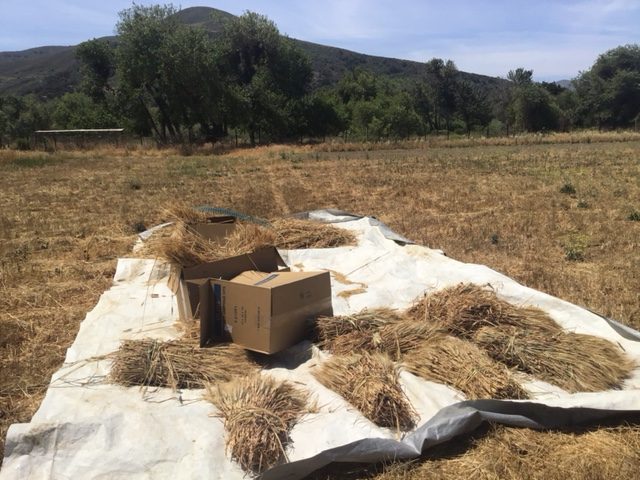
Wheat bundles in field
by Diane Pleschner | Apr 29, 2025 | Subsistence Farming
Purple garden majesty — Bruce’s garden after the April shower.
There’s broccoli, artichokes, Brussel sprouts, kale, carrots, and in the background hard red wheat.
He grew everything from seed with no fossil fuel. He’s rightly proud of his endeavor, all direct seeded and weeded with a grub hoe.
@winfield_farm is eating plenty high on the proverbial hog these days!! The afternoon sun shines light on the abundance— agriculture as art!
POTLUCK CONVERSATION
(Purple garden majesty)
I was at a potluck that several local gardeners hold where they can show off their cooking and tell stories. I was bragging about my garden and showed some photos. Another gardener asked me, “What do you do with it all? “
I had a pat answer, which is: the pigs are always eager customers. The question has lodged in my brain, however, and I keep trying to rationalize — an acre of grains, red wheat, white wheat, spelt, barley and corn, along with lots of Cole crops from the winter garden – because the “what do you do with it all “question is also a “why do you do it all,“ or at least in my head it has morphed into that.
Mostly I grow grains for dry storage, but I also try to keep two years supply in the drying shed and always keep seed for next season. I can answer “what I do” better than “why I do it,” because every season for many years, I have squirreled away the fall bounty. Finding the tools to process at very small scales is a parallel pursuit, and finding recipes are corollaries to the harvest abundance, but usually only pecking at the volumes waiting in the shed.
There is an advantage in growing grains in that they can be accurately weighed and entered in some sort of calorie ledger. “What is enough” is a valid question and it bothers me a bit, but “how much is possible” nags at me too, but in a positive kind of way.
The garden is growing very big these days, but it is spring and the winter was mild. I keep planting and so I keep increasing how much garden I need to keep cultivated. It can catch you and overwhelm you as the heat turns on, too many weeds rooted too deeply. So, you cultivate between rows at the first hint of newly germinated weed seeds. Bare ground between rows is eventually shaded by crops, but lots of cultivation while it is bare is essential.
What is possible, what tools, what seed, when to plant, those things I know. How to do it without lots of power, and again, what is possible? In that I have some confidence, borne by years and years of gardening. Still, it is a solitary pursuit and has been for most of the thousands of hours gardening in my life.
So why so much? I don’t really know, but I imagine somewhere in my gene line an answer lies. It wasn’t always a full larder, and no I can’t compensate for the distant past, but an empty belly has a very long memory, I think, or no memory at all.
Bruce
by Diane Pleschner | Jun 4, 2024 | WF News
Thanks to our new association with Schreiner’s Fine Sausage in Glendale, we’re now able to produce Smoked Boneless Mangalitsa Ham!
We’re offering Winfield Farm Mangalitsa ham in two styles:
The specialty of the house:
Boneless Mangalitsa Black Forest Brand Ham
Shreiner’s dips boneless Mangalitsa ham in caramel #29 to produce an amazingly succulent, flavorful treat!
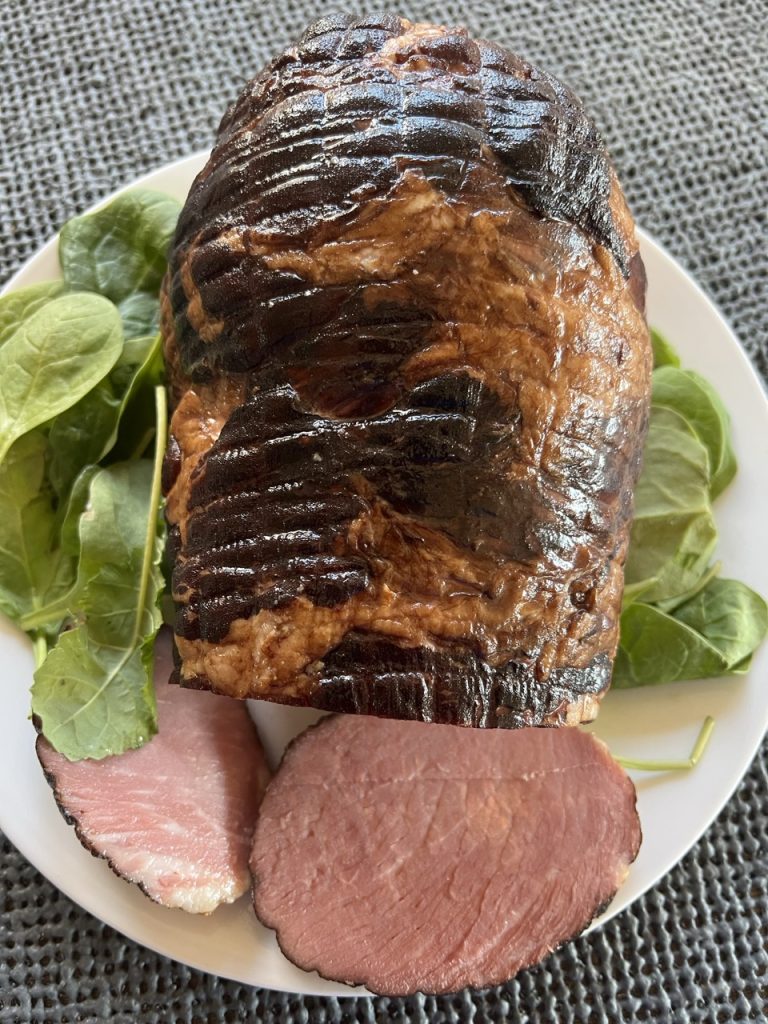
Get 4, 5, or 6 pound packs (Price $23 / pound) now from our limited supply of Mangalitsa Black Forest Brand ham at our online market.
We’re also offering:
Smoked Boneless Mangalitsa ham
Get 5 or 10 pound packs (Price $18 / pound) of Smoked Boneless Mangalitsa ham now at our online market.
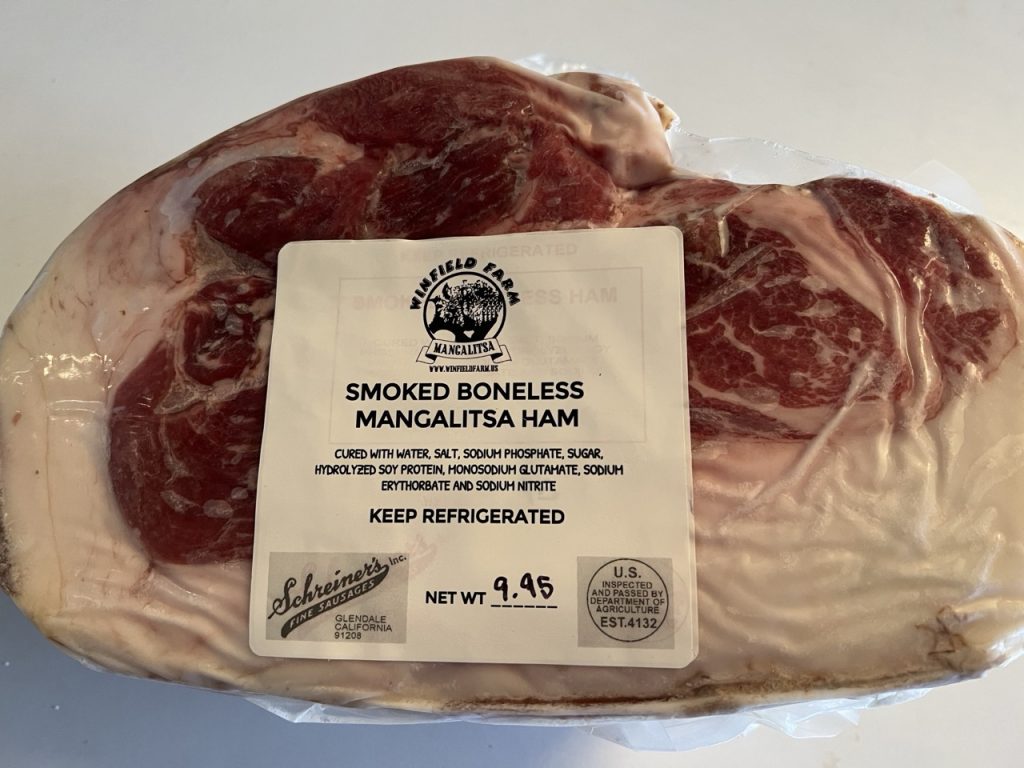
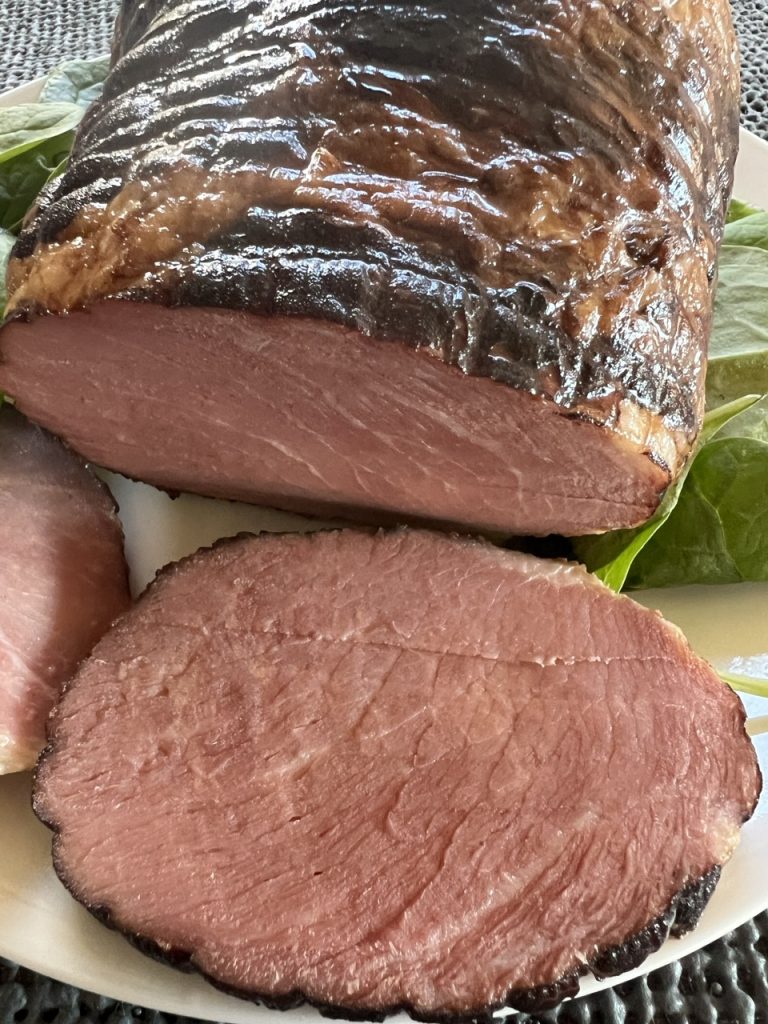
#####







